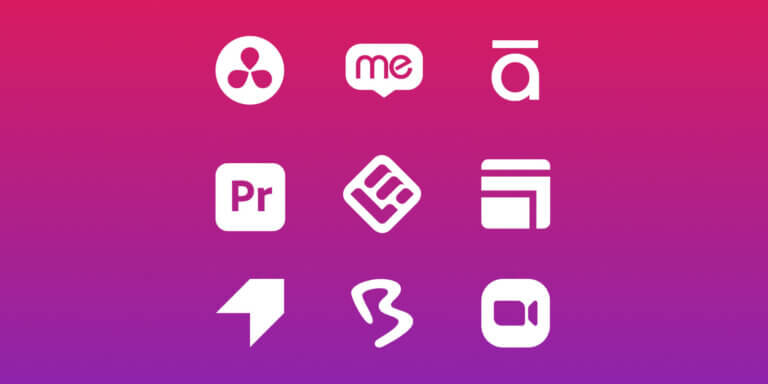Table of Contents
User adoption in SaaS is challenging. Getting users to not only try your product but truly integrate it into their lives is no small feat, especially with all the competition. And yet, it’s absolutely essential to the survival and growth of all SaaS companies.
In this blog, we break down the journey to effective SaaS product adoption and offer practical, actionable strategies to help you win users over:
Understanding SaaS adoption
To improve SaaS adoption, you first need to understand how it works and what it looks like at each stage.
What is SaaS user adoption?
SaaS adoption is the process of getting users to incorporate a product into their daily routine. It starts from early on in the customer journey when they first hear about the product to fully integrating into their lives.
Stages of user adoption in SaaS
Before users become loyal customers, they go through several stages. Each one is equally important in guiding them through the next one until users fully adopt the product. Understanding these phases helps you build more effective messaging and support services.
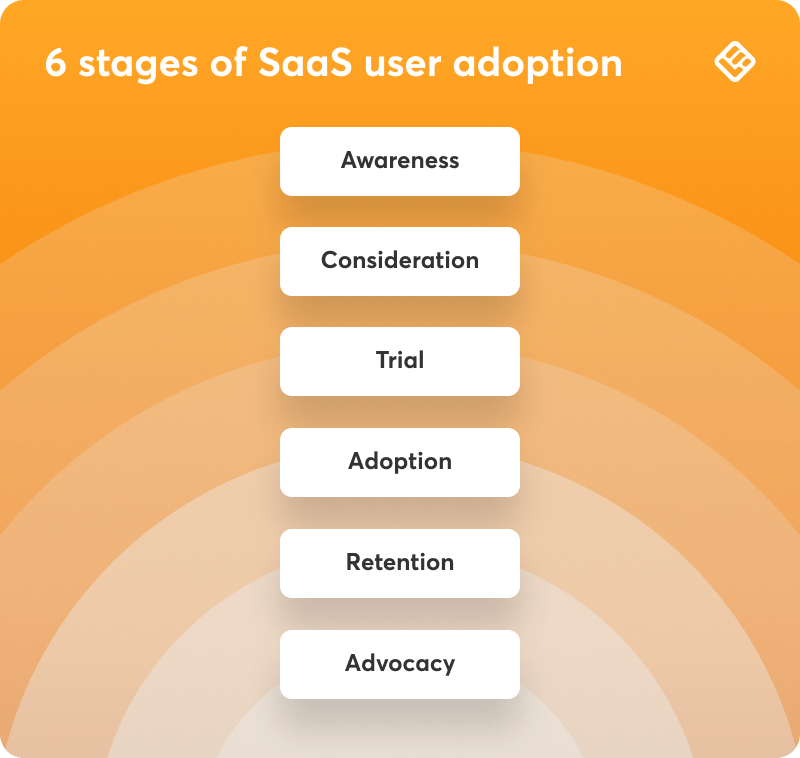
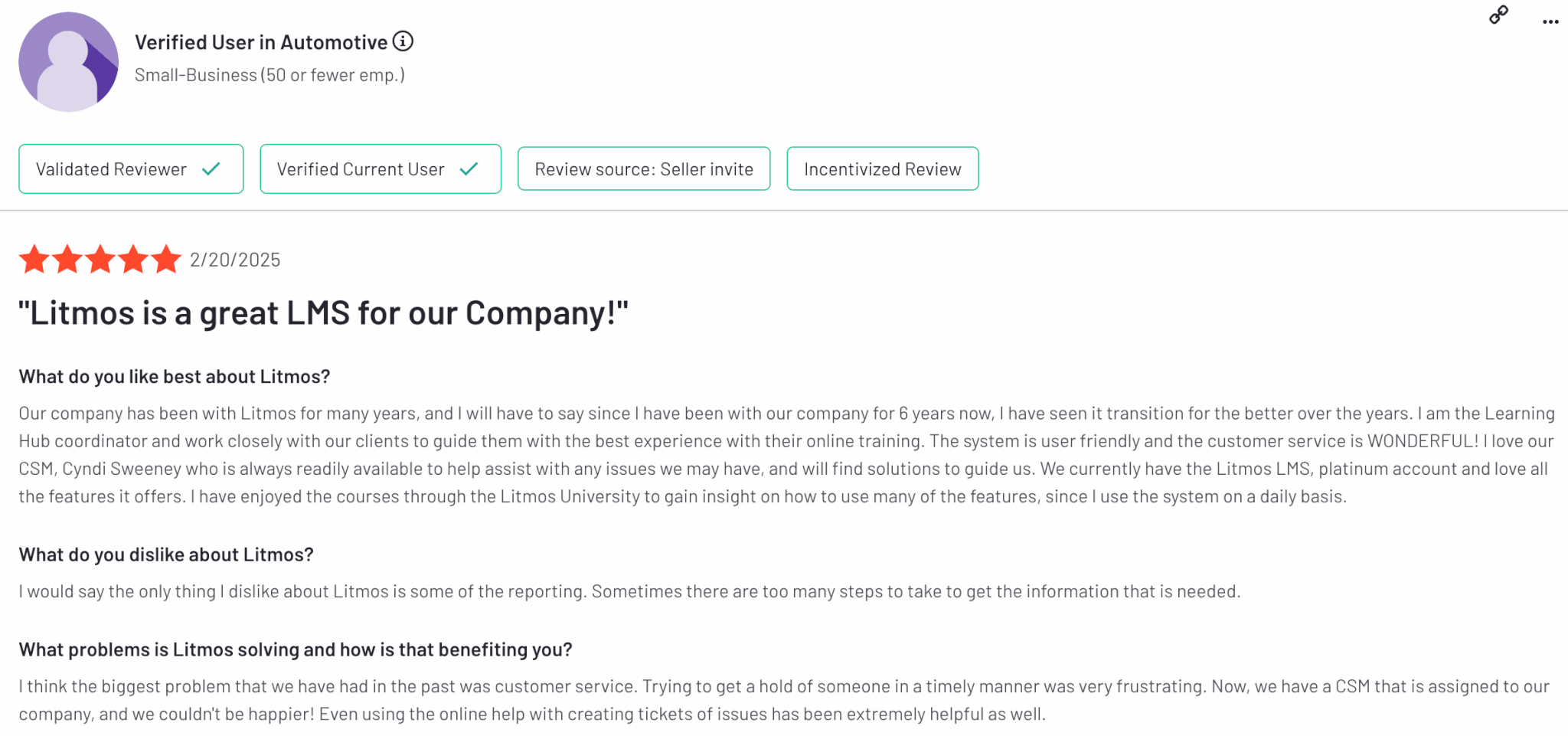
1. Awareness
Users discover the SaaS product through marketing, referrals, or search. They get a first idea of what the product does and how it might help them.
2. Consideration
The product has caught their interest: they explore features, pricing, and compare alternatives. They might sign up for a free trial or read reviews.
3. Trial
Users sign up for a free trial or freemium plan and have their first hands-on experience with the product. This is a make it or break it moment: to convert them into paying customers, you need to carefully guide them through the initial setup and main features until they reach their first milestone.
4. Adoption
Users find value in the product—it solves a challenge they have or somehow improves their life—and begin using it regularly.
5. Retention
Users stick with the product because it continues to deliver value. They explore more features, renew their subscriptions, and upgrade their plans.
6. Advocacy
The magical stage number six unlocks with long-term user retention and engagement: advocacy. This is the result of achieving high user satisfaction. So much so that customers recommend your product to others through positive reviews and referrals. They might also participate in case studies and sign up for beta releases.
💡There are different customer segments in the product adoption curve. Each one needs a different approach and support throughout the customer journey. Read our blog post The product adoption lifecycle explained: Engaging every adopter segment to learn more.
Why is user adoption critical for SaaS companies?
In this section, we go over all the ways SaaS companies benefit from high user adoption.
1. Prevents churn
User adoption means users have found value in the product. Therefore, the likelihood of them abandoning it significantly decreases unless there are other issues at hand, like affordability.
2. Boosts Customer Lifetime Value (CLTV)
Enhancing customer lifetime value is critical for SaaS companies. Users who have not simply adopted but are truly satisfied with your product are more likely to upgrade, renew, and buy add-ons.
3. Improves product innovation
Users who meaningfully interact with your product and have explored its features know it well enough to give valuable feedback regarding the product’s usability. This helps you refine the product, which is essential for product-market fit and future development for SaaS companies.
4. Builds advocacy and referrals
Happy, engaged users become brand advocates and refer others, leave reviews where they share key features and benefits, increasing organic growth and reducing marketing costs.
5. Drives revenue and growth
Ultimately, higher user adoption means more revenue—clear as day. Users who actively use and adopt your product are more likely to:
5 key strategies for enhancing user adoption
Getting users to sign up is just the beginning. Real user adoption means helping them find value and benefit from your product. These 5 strategies cover the most effective ways to make that happen.
Improving adoption and reducing churn in SaaS products is possible if you know what matters:
Focus on a personalized onboarding experience
First impressions do matter. Effective onboarding techniques enable users to navigate your product with ease and use key functionalities early on, helping boost product adoption and preventing early churn.
For a smooth onboarding experience, focus on reducing friction and offering support at the point of need. Essential tools in your arsenal:
Personalization during onboarding for free trial and new users is also vital.
This means that you need to segment users per job role, experience level, and any other relevant factor that calls for a custom onboarding flow.
Offer proactive support
Use data to identify at-risk users and proactively offer support. Host webinars, provide live chat, and assign customer success managers for high-value accounts. Make sure to include both self-service resources, like a knowledge base and customer training, and real-time help with customer support agents and chatbots.
Prioritize user-centric product design
Design with the user in mind. An intuitive interface, clear navigation, and as few steps as possible to key actions ensure users will not get frustrated or abandon the product. For product-led companies, good UX isn’t optional, but a baseline for SaaS adoption and customer engagement.
Leverage user feedback
Never get comfy with your product, even if everything seems to be going fine. Establish user feedback loops through NPS and CSAT surveys or interviews to eliminate the guesswork and hear firsthand that your product meets customer needs.
Monitor behavioral analytics to identify points of friction. Release and update features, prioritizing changes based on user input. This will ensure your product stays aligned with user needs, and it goes for both new and existing customers.
Double down on community building
Building SaaS user communities can boost user adoption and customer engagement. Create spaces where users interact and learn from each other, like forums or Slack groups, to encourage ongoing engagement.
Webinars and live Q&A sessions are also great opportunities for education and connection, helping new and existing users get more value from your product while building loyalty over time.
Measuring user adoption success: metrics and tools
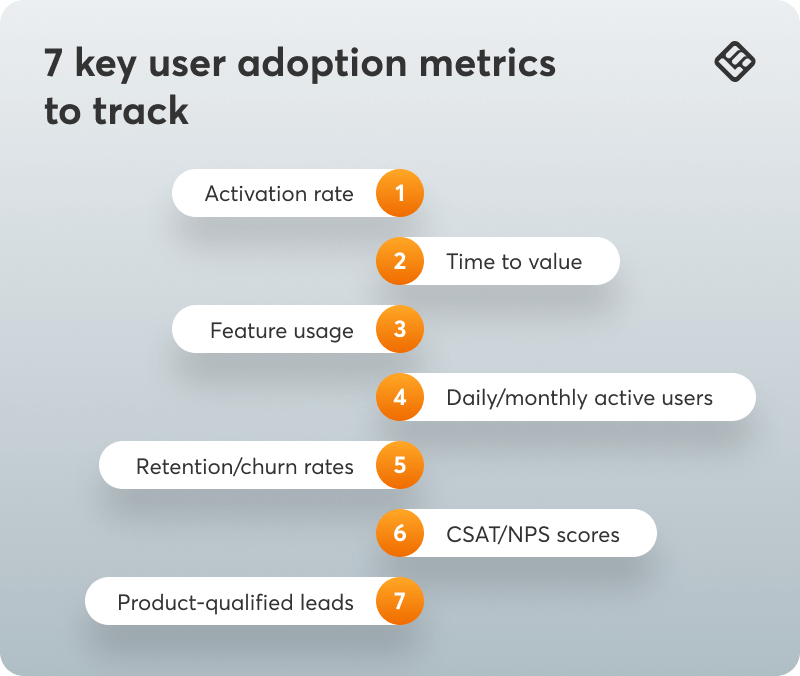
Next stop in the SaaS adoption puzzle: adoption metrics. If you’re wondering, “How can I measure the effectiveness of my adoption strategies?” we got you covered.
Measuring product adoption requires more than just counting logins or customers. To fully understand user behavior, you need to monitor several metrics. And to do so, you’ll need a mix of tools.
Let’s see how you can dive into metrics to improve user adoption and customer retention.
7 key user adoption metrics to track
The following 7 metrics provide valuable insights into user behavior, satisfaction, and long-term engagement, helping you make data-informed decisions to boost product adoption.
1. Activation rate
Activation rate measures how many users complete key steps that lead to their first success with your SaaS product, like uploading data, creating a project, or completing onboarding.
2. Time to value (TTV)
Closely tied to this is time to value (TTV), which tracks how long it takes users to reach that “aha” moment. Shorter TTV and higher activation rates mean users are finding value quickly, which is essential for long-term customer adoption.
3. Feature usage statistics
Tracking which features users engage with most (and which are being ignored) helps you understand where users find the most value, and which features are the most easy to discover and use. This will help you shape your onboarding flows and plan product development.
4. Daily/monthly active users (DAU/MAU)
These metrics reflect the number of customers using your product on a daily or monthly basis. They’re a straightforward way to monitor overall engagement. A healthy DAU/MAU ratio indicates strong user engagement, while a downward trend warns of friction or declining interest.
5. Customer retention/churn rates
Retention rate shows how many users continue using your product over time, while churn tells you how many are dropping off. High retention usually goes hand in hand with high product adoption and customer satisfaction. High churn means users aren’t finding enough value to stay, which calls for more investigation on your side to find out why.
6. Customer satisfaction and NPS scores
Launching a Net Promoter Score (NPS) survey is a commonly used method to measure user sentiment. A low-effort survey, it asks users how likely they are to recommend your product. Customer satisfaction surveys work similarly.
7. Product-qualified leads (PQLs)
PQLs are users who’ve demonstrated strong intent by engaging deeply with your product, like using premium features. In product-led growth models, this metric helps sales and marketing teams identify high-potential users who are more likely to convert or expand.
Tools for monitoring user adoption
What do users prefer? What do they hate about your product? And are they going to talk to their friends about it? The following tools will shed light on these and more burning questions.
First, a quick overview of the different tools you’ll need and their key functionalities and scope:
1. Product analytics platforms
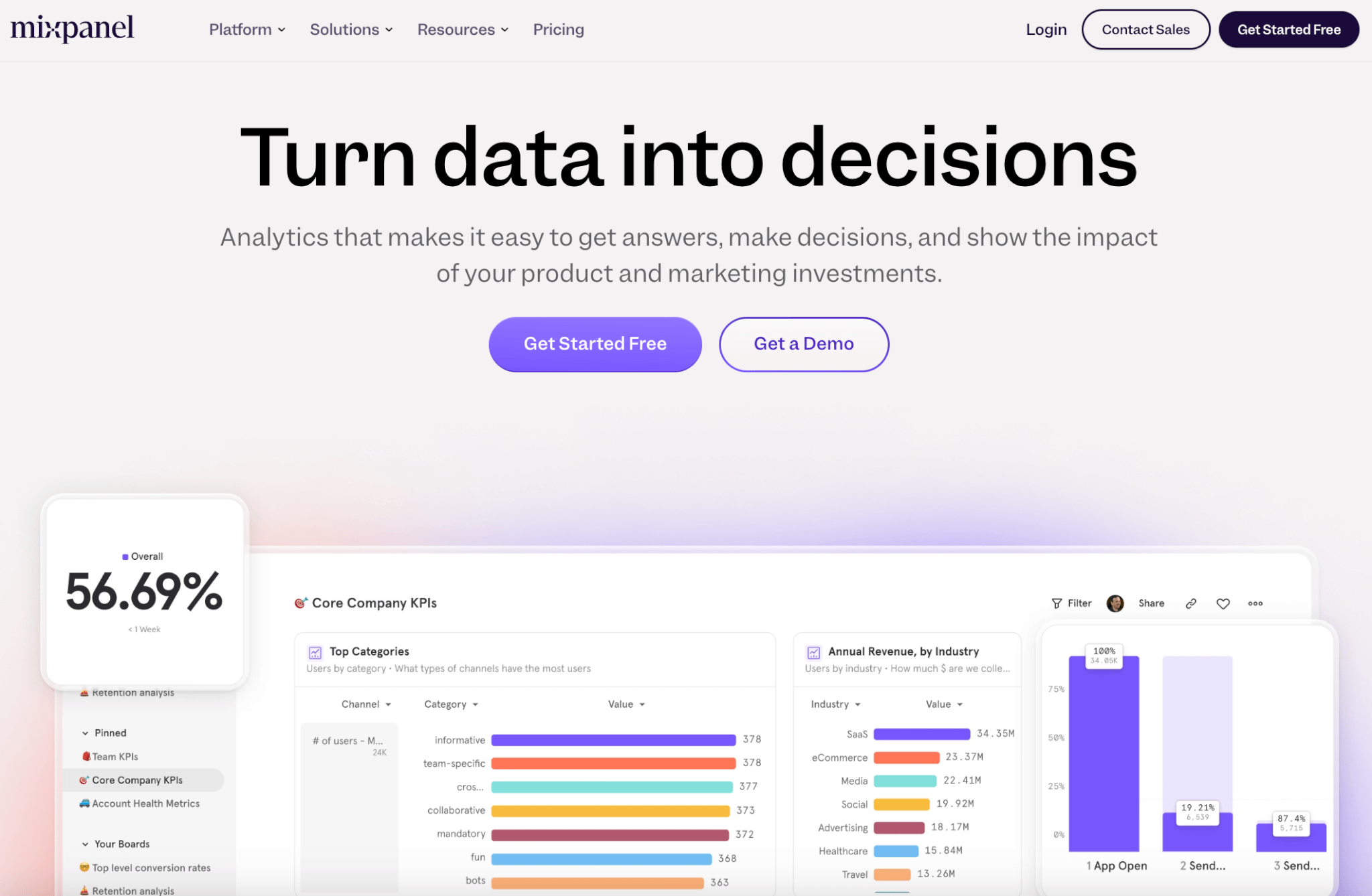
These tools are the backbone of SaaS product adoption measurement, offering a wealth of customer data. They track how new users interact with your product: which features they use, how often they return, and where they drop off. With robust event tracking and funnel analysis, product analytics platforms help teams identify what’s working and what’s not for all your customer segments.
Use for:
Top tools to explore:
Mixpanel, Amplitude, Heap, PostHog
2. Customer feedback and NPS tools

While analytics show what users are doing, feedback tools reveal why. Net Promoter Score (NPS), satisfaction surveys, and open-ended feedback offer valuable insights into user sentiment, perceived value, and potential friction points across the customer journey that could jeopardize customer loyalty. Encourage users to share their feedback by establishing continuous feedback loops through in app messaging and popup surveys.
Use for:
Top tools to explore:
Delighted, Qualtrics, Hotjar (for surveys), Typeform, UserVoice
3. Customer support and helpdesk tools
Support interactions are a goldmine for uncovering blockers to SaaS product adoption and improving customer success. Helpdesk platforms track user challenges and the types of issues they face, how often they occur, and how quickly they’re resolved, giving you insights into both product usability and support effectiveness.
Use for:
Top tools to explore:
Zendesk, Intercom, Freshdesk, Help Scout
4. User onboarding and customer education platforms
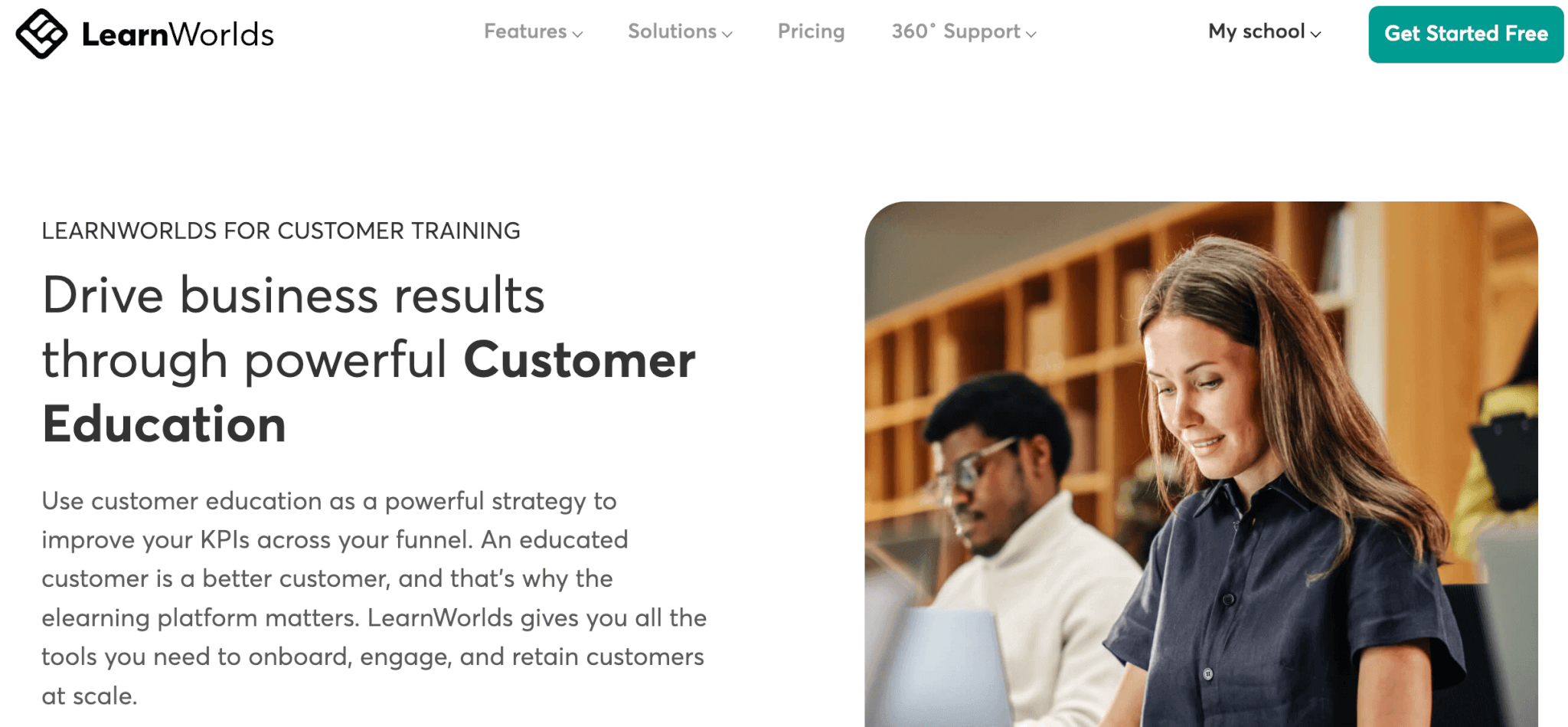
Most SaaS companies use these tools to onboard new customers and for good reason. User onboarding platforms support user adoption by helping new users get value faster through in-app guidance and video tutorials, while customer education platforms offer deeper education through structured online courses.
Among the key features of customer training platforms are learning analytics, which can also be very helpful in measuring the effectiveness of your onboarding process to make tweaks and improve product adoption.
Use for:
Top tools to explore:
LearnWorlds, Docebo, Appcues, Userpilot, Whatfix
👉LearnWorlds is a top-rated customer training platform that offers rich learning features, deep analytics, an AI assistant, and advanced tools for managing your online academy. Try it now with a 30-day free trial.
5. Community and communication platforms
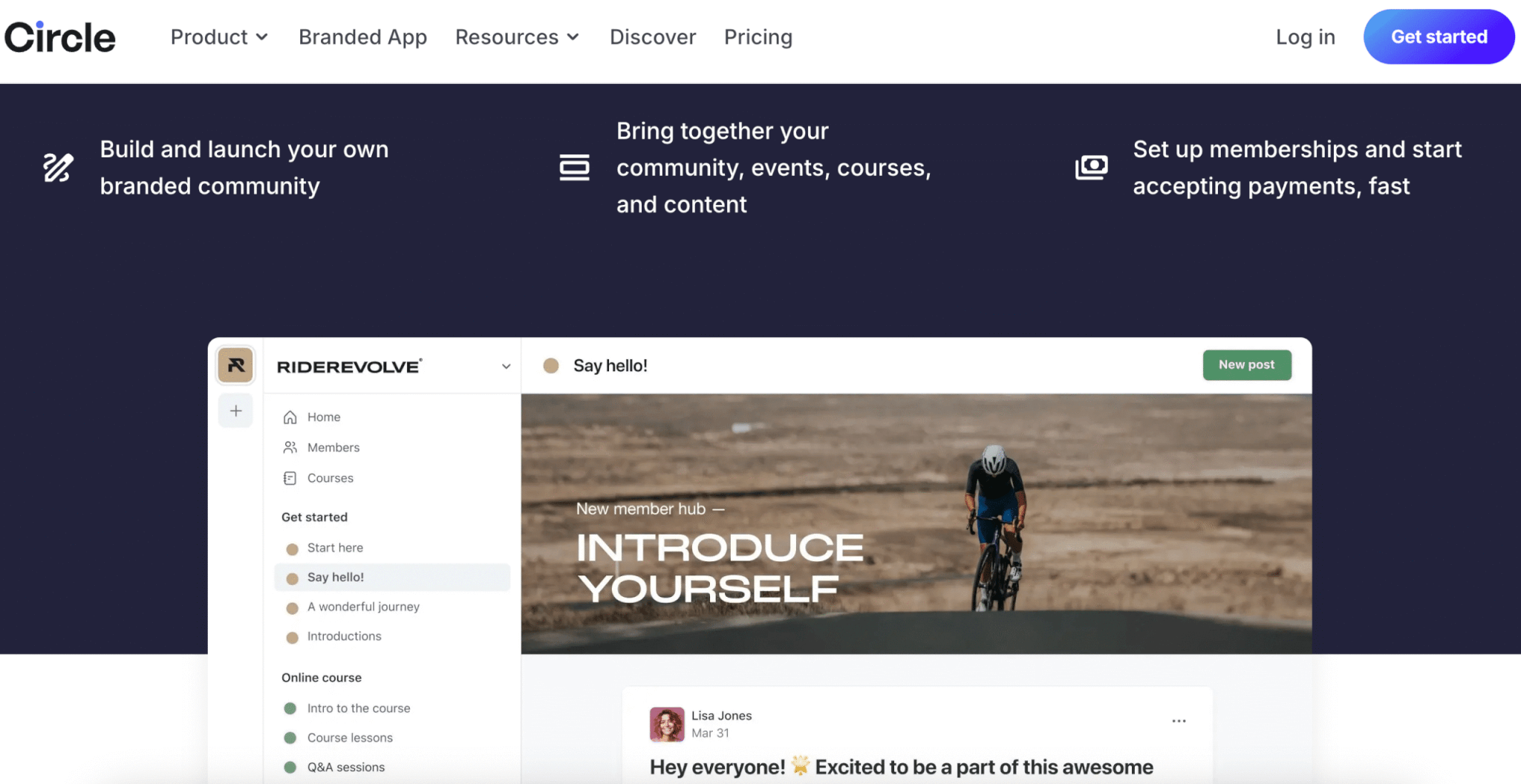
Sometimes the best insights (and support) come from users themselves. Community platforms put a different spin on your efforts, as they encourage peer learning and feedback sharing through online discussions and live events.
Use for:
Top tools to explore:
Slack (private communities), Discord, Circle, Zoom, Bevy
💡Explore more solutions in our blog post 5 top product adoption software platforms to boost user engagement.
Common challenges in driving adoption and how to overcome them
User adoption isn’t just about getting people to sign up—it’s about making sure they stick around, find value, and use your product consistently. While that might sound straightforward, many SaaS companies face similar roadblocks when trying to boost adoption. Here are some of the most common challenges and tips to overcome them and improve user adoption.
1. Complex or confusing onboarding
A clunky or overwhelming onboarding experience can stop adoption before it even starts. If new users don’t quickly understand how to use your product, or if they feel lost right after signing up, they’re likely to give up and move on.
How to overcome this:
Simplify the onboarding flow and personalize it based on user roles or goals. Use checklists, progress indicators for encouragement, and in-app tutorials to guide new users step by step. Focus on early wins that help users see the product value fast.
2. Unclear value proposition
If users can’t immediately see how your product helps them, they won’t stick around to find out. A vague or generic value proposition often results in new customers failing to reach the “aha moment.”
How to overcome this:
Segment users according to role, use case, and experience level. Then, tailor your messaging, onboarding process, and homepage to clearly show how your product solves a specific problem for the user. Highlight specific use cases and design onboarding paths aligned with different needs.
3. Low engagement after signup
Sometimes users sign up, explore a little, and never come back. This can happen when there’s no clear reason to return or if the product doesn’t create a habit quickly. Without timely reminders, feature nudges, or a good reason to re-engage, adoption drops off fast.
How to overcome this:
One of the most effective SaaS user engagement strategies is to use behavioral triggers to send timely emails or in-app messages that guide new users toward deeper engagement. Highlight underused features, offer tips, and create habit loops with recurring tasks, notifications, or personalized milestones.
4. Lack of support or training
When users run into problems and don’t have access to helpful support, it creates frustration. Especially for more complex SaaS tools, missing tutorials, sparse documentation, or slow customer support can prevent new users from progressing past the basics—or adopting the tool at all.
How to overcome this:
Build a robust self-serve support system with searchable help articles, videos, and in-app assistance. Pair it with responsive live chat and optional onboarding sessions or webinars. Make it easy for users to find help when they need it most.
5. Misalignment with user needs
Adoption suffers when there’s a gap between what your product offers and what users actually need. This often happens when products are developed without enough feedback. If your solution doesn’t fit naturally into a user’s workflow, they’ll likely abandon it for something that does.
How to overcome this:
Continuously collect and analyze user feedback through surveys, usage data, and interviews. Use these insights to adjust product direction and prioritize features that directly support user goals. Always validate assumptions with real users.
6. Internal resistance in teams
In B2B SaaS, even if one person is excited about your product, others on the team might resist it. People are often hesitant to change tools or learn something new. Without buy-in from leadership or enough perceived benefit, company-wide adoption can stall.
How to overcome this:
Enable champions within teams by equipping them with resources, training, and support. Offer onboarding for entire teams, highlight time-saving or ROI benefits, and provide proof points from similar companies. Leadership involvement is key—make it easy for decision-makers to see the strategic value.
7. Technical issues and poor performance
Bugs, slow load times, or unreliable features quickly erode trust. Even the most innovative product can lose users if it doesn’t perform reliably. Technical quality is a baseline expectation—if it fails, adoption will too.
How to overcome this:
Invest in performance optimization, frequent testing, and a reliable QA process. Respond quickly to bug reports and maintain transparent communication about fixes. A smooth, stable experience builds the trust necessary for sustained usage.
Addressing these challenges takes a thoughtful, cross-functional approach. When product design, marketing, customer success, and support teams align around the user experience, adoption becomes much easier to drive and sustain.
Moving forward: How to ensure continuous engagement
The product adoption process is an ongoing journey. Even after a user is onboarded and engaged, it takes consistent effort to keep them active, invested, and enthusiastic about your product.
To maintain momentum and foster long-term engagement, consider these best practices:
By staying proactive, responsive, and focused on user value, you can improve user adoption and turn one-time users into long-term champions—and ensure that your SaaS product remains essential in their daily lives.

Androniki Koumadoraki
Androniki is a Content Writer at LearnWorlds sharing Instructional Design and marketing tips. With solid experience in B2B writing and technical translation, she is passionate about learning and spreading knowledge. She is also an aspiring yogi, a book nerd, and a talented transponster.




